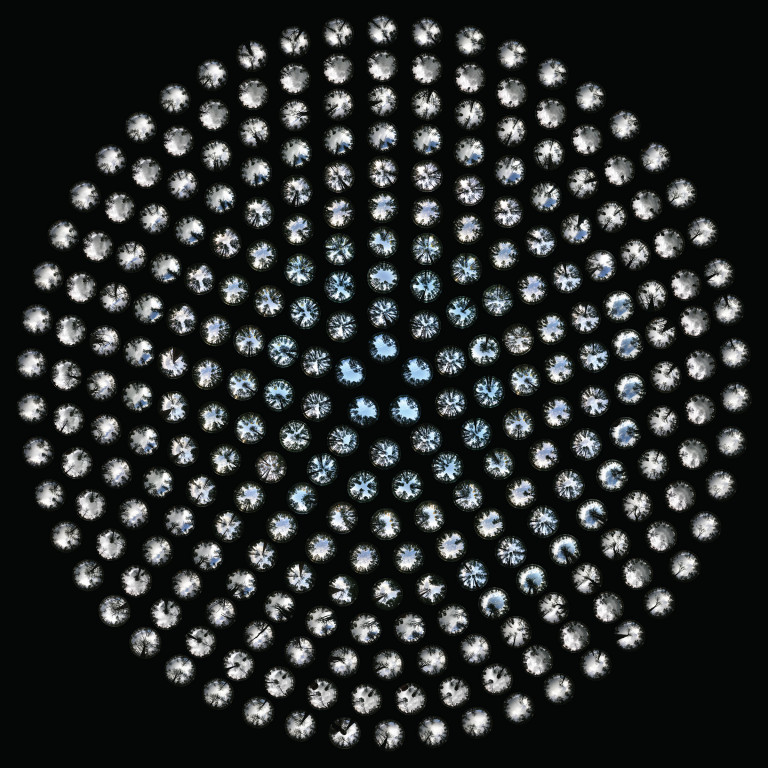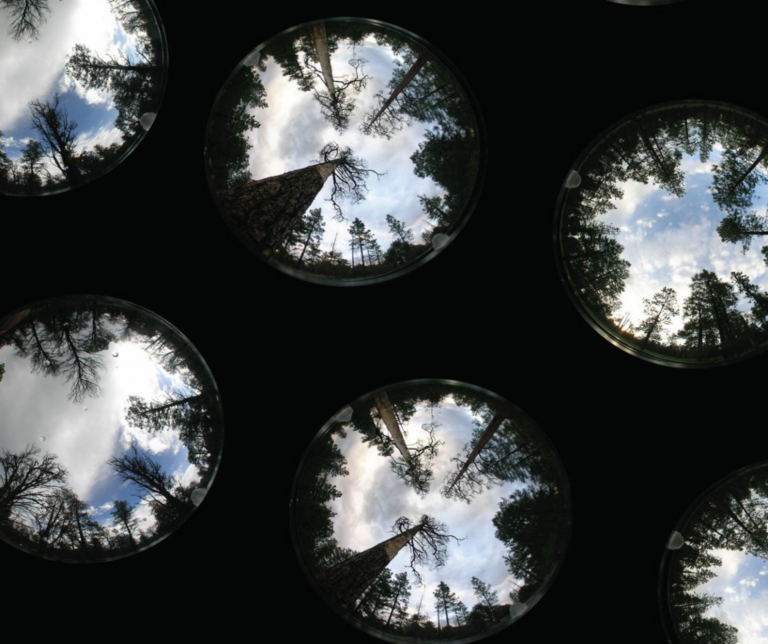Change over Time

Our newest permanent exhibit "Change over Time" by Ellen McMahon is back after eight years.
Artist Statement:
In June 2014 I accompanied UA ecologist Dave Breshears and his team as they documented Piñon Pine mortality at one of their study sites in New Mexico. I made photographs, video, drawings and rubbings of the trees in the forests devastated by a combination of drought, beetle infestation, and the new human factor thought to be the tipping point, the slight rise in global temperature. One of the scientists’ primary tools for determining the extent and effects of forest die-off is hemispheric photography. These images are used to quantify canopy loss and the resulting microclimate change as trees die. Back at the field station Breshears showed me hundreds of these 360-degree circular photographs they had taken of the forest canopy for analysis.
As an artist, distanced from the practical purpose of these images, I was struck by their jewel-like beauty—the forest reflected in a drop of water—and saw their potential to both communicate about and lament the dying forest. There were no images of one site to show tree mortality over time but that is the story I wanted to tell. I worked with the images in many configurations until I realized I could use concentric circles as a record of historical events just as tree rings do. I arranged the images to transition from inner rings of blue skies and healthy stands of Ponderosa pines to outer rings of burned Piñon-Juniper forests. I’m using scale, overwhelming multitude of images, imperfect crowded spacing, and resemblance to stained glass windows to evoke in the viewer a collection of conflicting feelings about our relationship to the world which sustains us.
Scientific data, when reinterpreted through the lens of art, can offer an experience beyond the didactic and towards a more universal sense of wonder and discovery.
In the last decade the South-western United States has lost more than 20% of its forests. In the 2002 drought Piñon pines died across the four corners area, reaching 90% mortality in some sites in Arizona and New Mexico. There is mounting scientific evidence that forests worldwide are becoming more vulnerable to previous threats such as drought and insect infestation due to the rise in global temperature caused by greenhouse gas emissions.
The project was partially funded by the University of Arizona’s Confluencenter for Creative Inquiry, the School of Art, and the College of Fine Arts.


